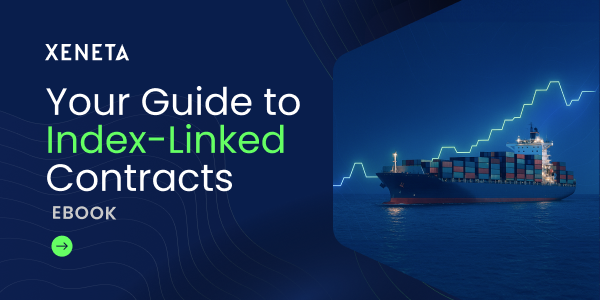Peter Sand, Xeneta Chief Analyst, provides insight into impact of 90-day lowering of tariffs between the US and China.
All comments below can be used by the media and attributed to Peter Sand.
Overview:
Politicians on all sides will argue over who has won, who has lost and who has the better deal, but the most important point is that we will now see goods flowing more easily between the world’s biggest trading nations. The spiralling trade war was catastrophic for businesses, so there will be huge relief that diplomacy appears to be returning.
Impact on freight rates (an early peak season)
Average transit time on the Transpacific trade is 22 days, so shippers will take the 90-day window of opportunity to ship as many goods as possible into the US and this will put upward pressure on freight rates.
Carriers responded to falling volumes from China to the US by slashing container shipping capacity and redeploying it onto other trades, such as the Far East to Europe. It takes time to shift capacity back again, so a revival in volumes from China to US may mean shippers have to pay a little over the odds in the short term.
Q3 is traditionally the peak season for ocean container shipping, but that may arrive earlier in 2025 if there is now a rush to import goods into the US from China. Although the resurgence in demand may be slower for some low-margin goods due to the tariffs still in place.
In the longer term, it is likely freight rates will continue the downward trend seen in the market during Q1 prior to the “Liberation Day” announcement by Trump.
Average spot rates are down 56% and 48% from China to the US West Coast and US East Coast respectively since 1 January, despite an uptick of 18% and 12% on 1 April. Rates have fallen slightly since then but remain elevated compared the end of March.
Note: Data in the Xeneta platform shows the four-week rolling average for offered capacity from Asia to the US is down 17% since 20 April to stand at 265 000 TEU on 12 May (see chart below). Blanked sailings are up 86% in the same period to stand at 89 100 TEU.

It must not be ignored there is still a 30% tariff on imports from China to the US and this will be prohibitive for some businesses with lower-margin goods, so there will still be an adverse impact on ocean container shipping demand. It may also take shippers a little time to ramp up sourcing and manufacturing in China again if they took the foot off the gas following the 145% tariffs announced on 9 April.
Longer term impact
There will be relief over the easing of tariffs, but shippers cannot carry on as if nothing has happened because, if we have learned anything in the past few months, it is to expect the unexpected and further volatility. The geopolitical risk on supply chains is ever present.
Businesses do not want to be under the thumb of geo-politics any longer and will accelerate plans for diversification in supply chains so they are able to react much quicker and more decisively against future threats.
Ends
Xeneta’s Media Contacts:
Philip Hennessey
Director of External Communications
Xeneta
+44 7830 021808
press@xeneta.com
.png)




